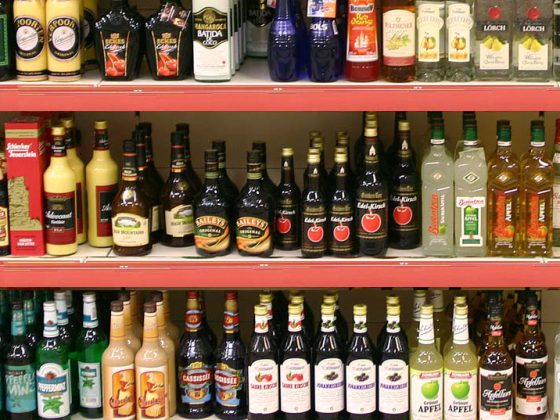At the EPA Congress in Munich, the focus was on depression, schizophrenia and alcohol dependence. Studies show that early restoration of positive affect, in particular, is related to response in depression. In the field of schizophrenia, cognitive impairment is a critical factor in the impairment of quality of life and functionality. New atypical antipsychotics show good efficacy in this area. For alcohol dependence, on the other hand, reduction rather than abstinence has proven to be a useful treatment goal for some patients.
(ag) In its symptomatology, depression not only includes negative affects such as depressed mood or sadness, but it also means the loss of positive affects such as joy, motivation or energy. According to Prof. Pierre-Michel Llorca, Clermont-Ferrand, new therapeutic options such as the active ingredient agomelatine (Valdoxan®) are addressing this issue. This is a melatonergic (MT1 and MT2 receptor) agonist and 5-HT2C antagonist approved in Switzerland for the treatment of adult depressive episodes according to ICD-10 (“major depression” according to DSM IV). In animal models, it resynchronizes circadian rhythms and increases the release of norepinephrine and dopamine. This is related to the regulation of mood and emotions. It has no influence on extracellular serotonin levels. Moreover, it leads to a decrease in stress-induced glutamate release and an increase in BDNF (“brain-derived neurotrophic factor”).

According to Prof. Llorca, studies have shown that depressed patients primarily expect therapy to restore their positive mental health. One of these positive affects with predictive value for response is motivation, which can be improved early with agomelatine. In summary, a reduction in the ability to experience positive affect is referred to as anhedonia. Studies show that agomelatine, for example, is more effective against this disorder compared with venlafaxine, with the same antidepressant efficacy [1].
According to Prof. Llorca, such early changes in positive affect are crucial for response; they even seem to be a more specific predictor than the attenuation of negative emotions [2].
Cognitive improvement in schizophrenia has functional relevance
At the EPA congress, the focus was also on diagnostics and therapy in progressive schizophrenia. According to Prof. Peter Falkai, MD, of Munich, Germany, studies in recent years have shown that machine learning algorithms can be used to make diagnostic classifications of neuropsychiatric patient populations. MRI data should enable such multivariate neuroanatomical pattern classification and identify different patients at risk for psychosis/schizophrenia. This would represent a much needed advance in the field of biomarkers of prodromal psychosis phase.
Since cognitive impairment is a key factor in the lower quality of life and impaired functionality of schizophrenia patients, research is currently underway to determine the extent to which atypical antipsychotics can improve cognition. Lurasidone is a new atypical antipsychotic that is showing promising results, according to Prof. Philip Harvey, Miami: “In a six-week, placebo-controlled and a six-month, double-blind study phase, we showed that lurasidone was superior to both quetiapine XR and placebo in terms of cognitive outcome (CogState measure). In terms of functional capacity (UPSA-B measure), both agents were more effective than placebo [3].”
A mediating factor could be illness awareness, so-called insight or “insight”: lurasidone produced significantly greater improvement in insight scores than quetiapine XR after 32 weeks in recent studies. Improved illness awareness presented as a significant mediator of the effect of lurasidone 160 mg (vs. placebo) on cognitive and functional outcomes after six weeks of treatment. In addition, a significant association was found between improved insight and higher UPSA-B and quality of life scores at weeks 19 and 32 [4].
Drinking reduction instead of abstinence as a therapy goal
“Many people with alcohol addiction who actually needed treatment are not receiving it because they are not already ready to stop using altogether, ” said Prof. Jonathan Chick, MD, West Linton. Therefore, he discussed the extent to which drinking reduction also has clinical relevance. This can be achieved, for example, with the active ingredient nalmefene (taken as needed) [5]. The strongest effects are achieved precisely in that subgroup that has a confirmed high risk of drinking [6]. “What was also found in studies was that the mental component of quality of life could be improved with the drug and that it was significantly associated with drinking reduction,” Prof. Chick summarized. “So for some sufferers, this treatment goal may well have clinical relevance. Nalmefene not only reduces heavy drinking days, but also total alcohol consumption.”
Source: 22nd European Congress of Psychiatry, March 1-4, 2014, Munich, Germany.
Literature:
- Martinotti G, et al: Agomelatine versus venlafaxine XR in the treatment of anhedonia in major depressive disorder. Journal of Clinical Psychopharmacology 2012; 32(4): 487-491.
- Gorwood P, et al: The increase of positive emotions after two weeks of agomelatine is more specific to predict later treatment response than the decrease of negative emotions. European Psychiatry 2014; Article: EPA-0601.
- Harvey PD, et al: Effect of lurasidone on neurocognitive performance in patients with schizophrenia: a short-term placebo- and active-controlled study followed by a 6-month double-blind extension. Eur Neuropsychopharmacol 2013 Nov; 23(11): 1373-1382. doi: 10.1016/j.euroneuro.2013.08.003. epub 2013 Aug 27.
- Harvey P, et al: Impact of improved insight in schizophrenia: a double-blind lurasidone and quetiapine xr study. European Psychiatry 2014; Article: EPA-0321.
- Mann K, et al: Extending the treatment options in alcohol dependence: a randomized controlled study of as-needed nalmefene. Biol Psychiatry 2013 Apr 15; 73(8): 706-713. doi: 10.1016/j.biopsych.2012.10.020. Epub 2012 Dec 11.
- van den Brink W, et al: Efficacy of as-needed nalmefene in alcohol-dependent patients with at least a high drinking risk level: results from a subgroup analysis of two randomized controlled 6-month studies. Alcohol Alcohol 2013 Sep-Oct; 48(5): 570-578. doi: 10.1093/alcalc/agt061. Epub 2013 Jul 19.
HAUSARZT PRAXIS 2014; 9(5): 47-48











